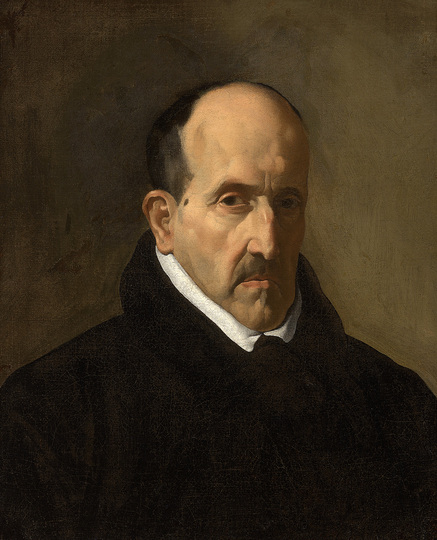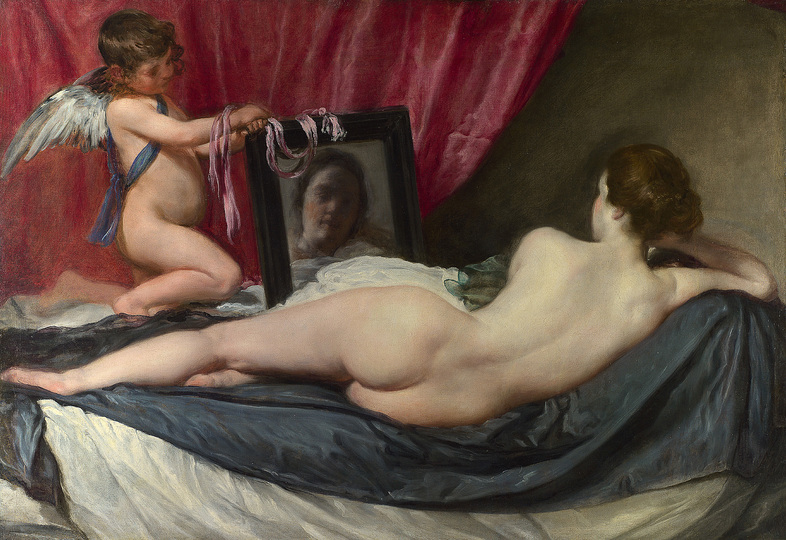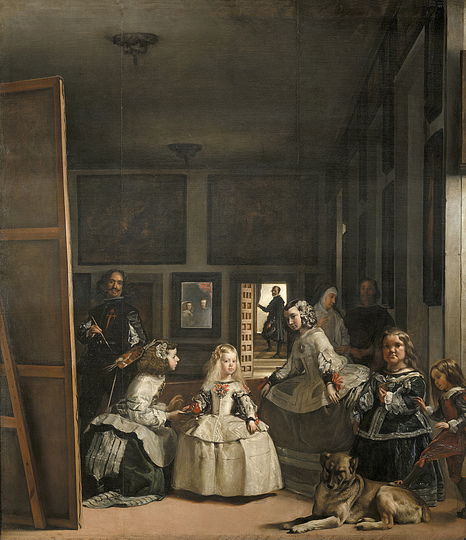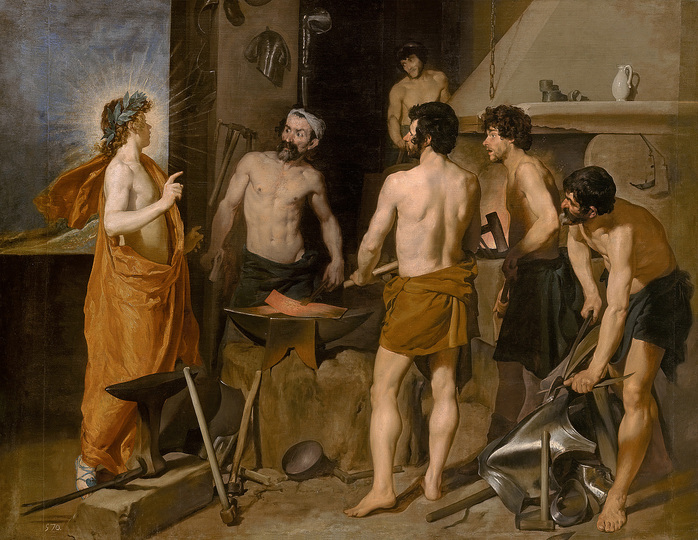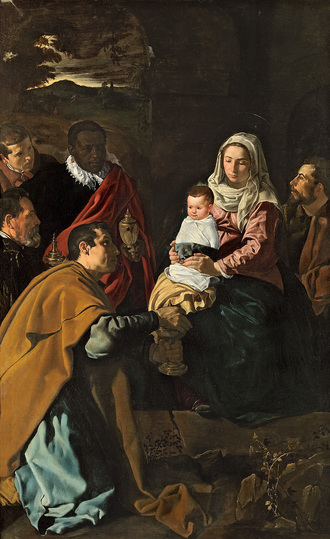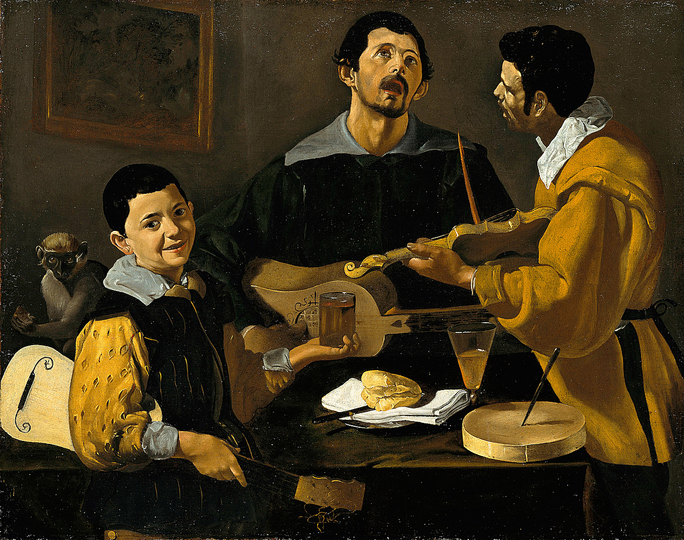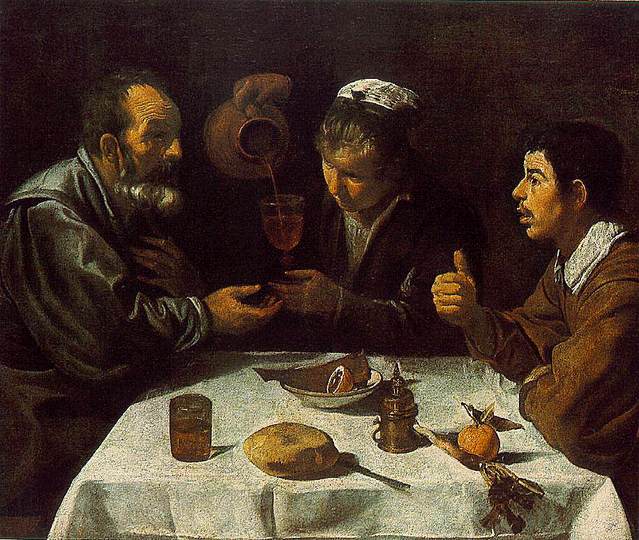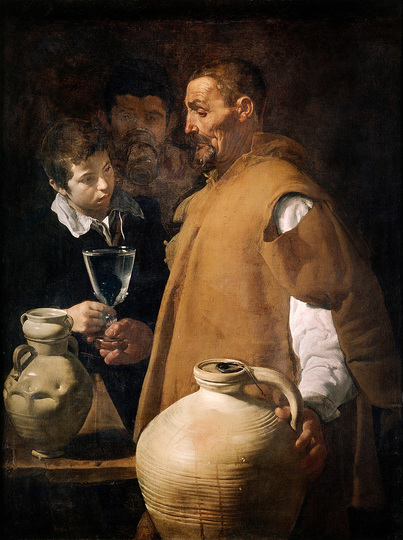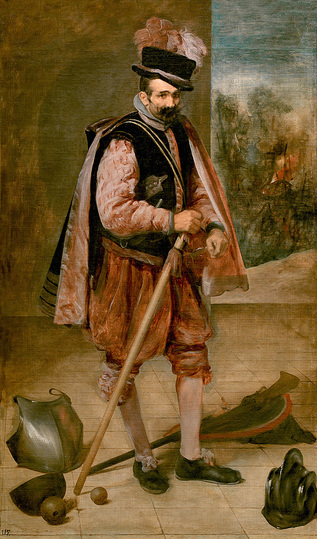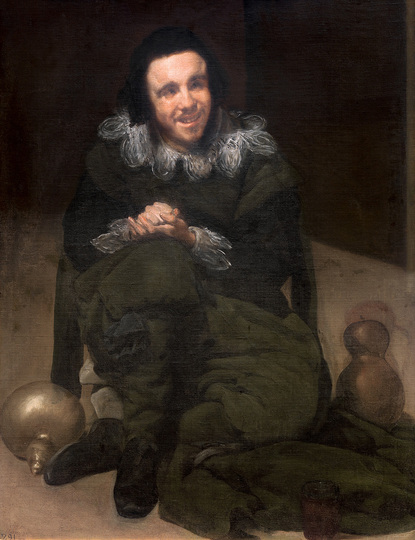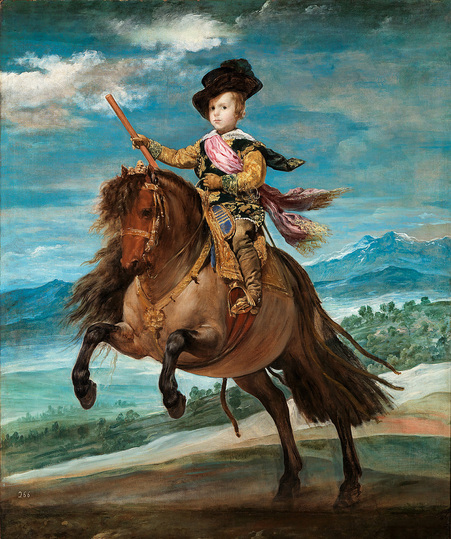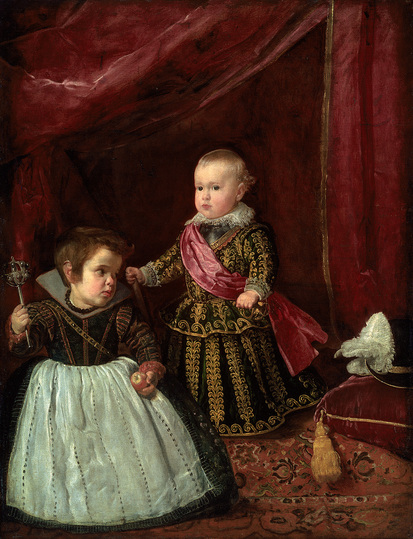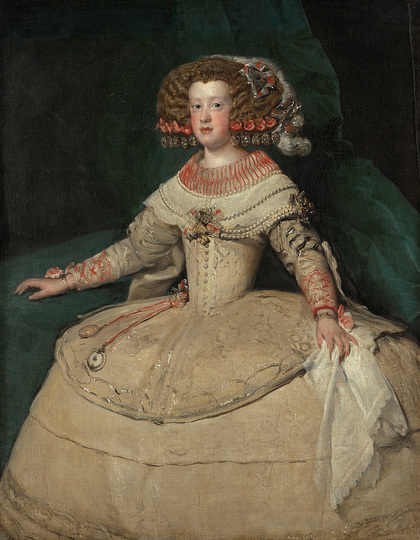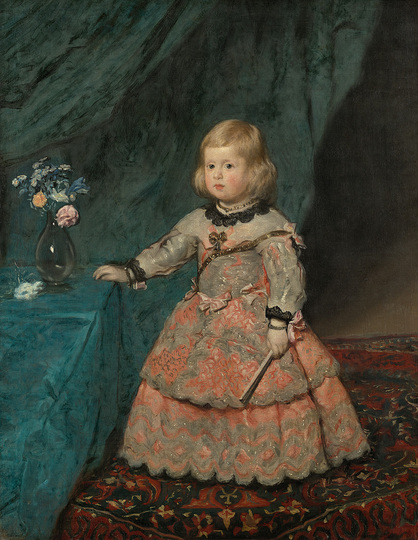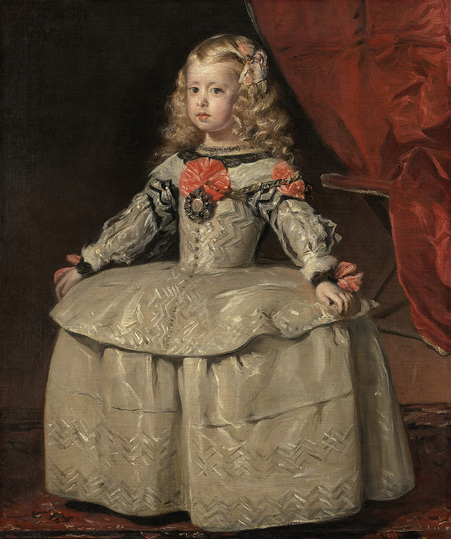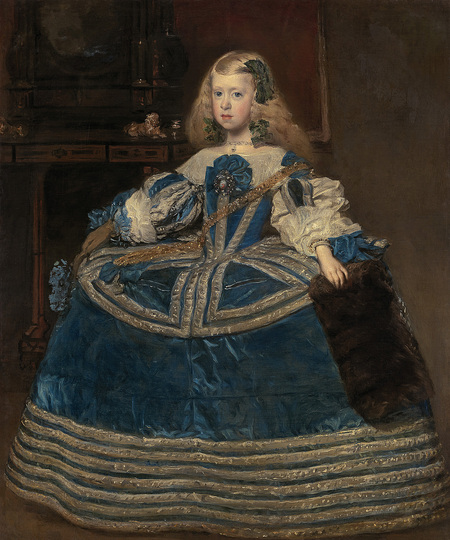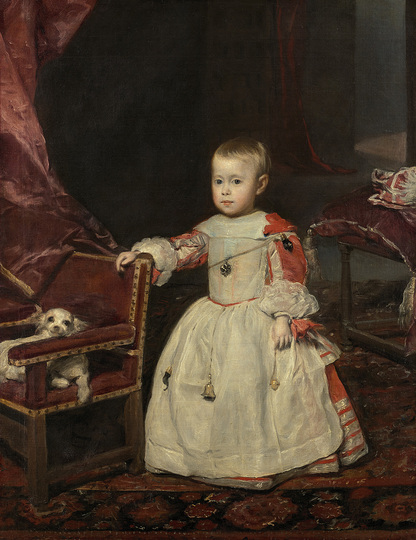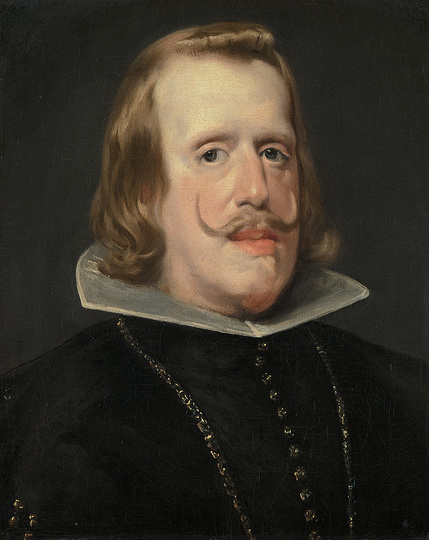Diego Velázquez
Diego Rodriguez de Silva y Velázquez (1599-1660) was born in Seville. His precocious talent soon brought him to the attention of King Philipp IV, who made the twenty-four-year-old artist his court painter, a position Velázquez retained until the end of his life.
Producing official portraits of the king and his family was among the foremost duties of every court painter, but Velázquez extended this to include different members of the court, developing such a modern, psychologically perceptive view of his sitters that his compositions continue to fascinate all who see them.
The Kunsthistorisches Museum is hosting the first-ever monograph exhibition in a German-speaking country dedicated to Diego Velázquez until February 15th, 2015. Comprising many of his seminal works, the exhibition offers a comprehensive survey of the Spanish court painter’s complex oeuvre.
As a result of the dynastic and political connections between the Habsburg rulers in Madrid and Vienna, the Kunsthistorisches Museum holds outstanding portraits by Velázquez, among them charming likenesses of the Spanish infantas. Images courtesy: Kunsthistorisches Museum, Vienna.
"The Rokeby Venus" is perhaps the most beautiful nude back ever painted in the history of European painting. Diego Velázquez, Venus at her Toilet (The Rokeby Venus), 1647-51, 122,5 x 177 cm © The National Gallery, London
Diego Rodríguez de Silva y Velázquez, Las Meninas, or The Family of Felipe IV, ca. 1656, Oil on canvas, 318 cm x 276 cm. Museo Nacional del Prado, Madrid
Velázquez painted a number of scenes from Greek & Roman myths. Ovid records that Venus cheated on her husband Vulcan with Mars. Here, Velázquez depicts the moment when Apollo enters Vulcan’s forge to tell him of his wife’s infidelity. Apollo’s ideal youthful beauty is set off by the realistic rendering of the divine blacksmith and his assistants. These men are used to hard labour, their gestures and expressions are extremely life-like. At the same time their semi-nude bodies are informed by classical sculpture. Diego Velázquez, Vulcan’s Forge, 1630, Oil on canvas, 223 x 290 cm © Madrid, Museo Nacional del Prado
When Velázquez painted this Adoration of the Magi it was his largest and most ambitious composition to date. It was probably commissioned by the Jesuits in Seville, with whom the artist’s teacher and father-in-law maintained excellent relations. The protagonists were clearly painted from the life: the aged king on the left is a portrait of Pacheco, and both the king in the foreground and St. Joseph are modelled on Velázquez’ himself. Diego Velázquez, The Adoration of the Magi, 1619, 203 x 125 cm © Photographic Archive, Museo Nacional del Prado, Madrid
"Three Musicians" is regarded as the artist’s earliest extant work in the genre then known as bodegones (cookshops or inns). Velázquez did not invent this genre, but clearly aware of Caravaggio’s work. Diego Velázquez, Three Musicians, c. 1617–1618, Oil on canvas, Berlin, Staatliche Museen, Gemäldegalerie
This bodegones painting is believed to be a collaboration of Velazquez and one of his atelier assistants. Diego Velázquez, Peasants
at table (El Almuerzo) c. 1618–1620, Oil on canvas, 96 x 112 cm. Budapest, Szépmu" vészeti Múzeum
Many regard this as Velázquez’ best work from his early years in Seville, and it is undoubtedly the most important of his bodegones. Diego Velázquez, The Waterseller, c. 1620-22, 106,7 x 81 cm. London, Apsley House, The Wellington Museum © English Heritage
Don't be fooled by glittering armours and weapons by the model's feet and be led to think that this man is a military hero. Don Juan de Austria was a jester at the court of King Philip IV. Velázquez liked to cross boundaries between reality and illusion and to play with paradoxes. Diego Velázquez, Don Juan de Austria, c. 1633, Oil on canvas, 210 x 123 cm © Madrid, Museo Nacional del Prado
The portraits of dwarfs and buffoons are among the most striking paintings in Velázquez’ oeuvre. The sitters’ physical and psychological abnormalities formed an established counter-world to the highly structured and hierarchical world of the court. Diego Velázquez, The Buffoon Juan de Calabazas (Calabacillas), c. 1638, Oil on canvas, 106 x 83 cm © Madrid, Museo Nacional del Prado
Diego Velázquez, Prince Baltasar Carlos on horseback, 1634-1635, 214,5 x 177 cm © Photographic Archive, Museo Nacional del Prado, Madrid
Diego Velázquez, Infante Baltasar Carlos with a Dwarf, 1631–1632, Oil on canvas, 128 x 101,9 cm © Boston, Museum of Fine Arts
Diego Velázquez, Infanta Maria Teresa (1638–1683), 1652–1653, Oil on canvas, 127 cm x 98,5 cm
© Vienna, Kunsthistorisches
In the 17th century the Spanish Habsburgs sent portraits of their children to their Habsburg cousins in Vienna. Among the most beautiful are the three portraits by Velázquez depicting Infanta Margarita aged two, aged five (in a white dress) and aged eight (in a blue dress). She was the daughter of Philip IV and his second wife Mariana of Austria. Diego Velázquez, Infanta Margarita (1651–1673) in a Pink Dress, 1654,
Oil on canvas, 128,5 x 100 cm © Vienna,Kunsthistorisches Museum
This picture of the five-year-old princess was also sent to her grandfather Emperor Ferdinand III in Vienna. She is wearing the white court robe in which Velázquez depicted her in his celebrated painting »Las Meninas«, which is now in the Prado in Madrid. Diego Velázquez, Infanta Margarita (1651–1673) in a White Dress, c. 1656, Oil on canvas, 105 cm x 88 cm © Vienna, Kunsthistorisches Museum
It was his final portrait of the now eight-year-old princess. Together with the por- trait of her brother Felipe Prospero it was sent to Emperor Leopold I in Vienna in 1659. Diego Velázquez, The Infanta Margarita in a blue dress, 1659, 126 x 106 cm © KHM
In 1657 Queen Mariana (no. 35), the second wife (and niece) of King Philip IV, gave birth to the long-awaited heir to the Spanish crown. In 1659 this painting and the portrait of his sister Margarita in a blue dress were sent to Emperor Leopold I in Vienna. Felipe Prospero was a sickly child. This moving portrait is among Velázquez’ last and greatest works. He shows us both the crown prince and the ailing child, draped with amulets and good-luck-charms. Diego Velázquez, The Infante Felipe Prospero, 1659, Oil on canvas, 128 x 99 cm © Vienna, Kunsthistorisches Museum
The excellent connections of Francisco Pacheco, Velázquez’ father-in-law, helped the young artist to establish himself in Madrid in 1623. After the king had seen Velázquez’ portrait of his prime minister, the Conde Duque de Oli- vares, Philip IV decided to sit for him too. A number of portraits connected to Velázquez have survived from this time, both full-length and half-length compositions. King Philip IV of Spain painted in the Workshop of Diego Velázquez, c. 1653–1656/59, Oil on canvas, 47 x 37,5 cm © Vienna, Kunsthistorisches Museum
Inspirations.
More cats in art
Cats throughout the centuries.
Heinrich Hoerle, Franz Wilhelm Seiwert and Anton Raederscheidt
Paintings by Heinrich Hoerle, born 1895, Franz Wilhelm Seiwert, born 1894, and Anton Räderscheidt, ...
American Modern Paintings at Sotheby´s
Sotheby's New York sale on Wednesday, May 20th totaled $38,301,625 reflecting the continuous health ...
Modigliani: Your real duty is to save your dream
"What I am searching for is neither the real nor the unreal, but the subconscious, the mystery of wh...
Frank Stella: Radical Abstraction
In 1959, a newcomer in his early twenties takes New York’s art scene by storm: the American Frank ...
Gordon Walters: Koru
"My work is an investigation of positive/negative relationships within a deliberately limited range ...
Francisco Sobrino: Geometry, Light and Movement
Francisco Sobrino (1932 – 2014) was one of the great geometric and kinetic artists of the 20th cen...
Monet and the Birth of Impressionism
The nineteenth century was a time of upheavals. A wide variety of developments took place at the sam...
Jordi López Aguiló
Jordi López Aguiló, born in Valencia 1983, worked with JDS Architects Copenhagen, Ibos et Vitart P...
Paper Things
A concept by Pol Úbeda Hervàs for Torraspapel.
Pedro Bellido Barquero
Pedro Bellido Barquero: Así podríamos resumir mi infancia, adolescencia, postadolescencia y como q...
New Museum
Covers is an investigation about architecture as a consumption object or souvenir and its relation w...
X Spanish Biennial
We start with the standard panel used ´traditionally´ to display an architect´s work: name, chose...
Richard Estes´ New York
"Estes is a paradigmatic example of a world-class artist who is also a consummate artisan. He uses h...
Magazines and Still Lifes: Omar Sosa
Graphic designer Omar Sosa was born 1983 in Barcelona. After obtaining his degree in graphic design ...
Herb Aach: Color Theory
Intense hues evenly inhabit the circular forms: clear orange, a lush green, a glowing violet and oth...
The Bean King
A painting by Jacob Jordaens
Merry del Val
Studio Merry was founded in 2005 by Alfonso Merry del Val in Madrid.
Santiago Villanueva
Art conceived as an intimate experience of body and time, a quest for an internal portrait in which ...
Gianfranco Pardi
Born in Milan in 1933, Gianfranco Pardi started studying poetry and philosophy, dedicating himself t...
Hello Kitty Culture
The iconic Hello Kitty turned forty in 2014. Sanrio and the Japanese American National Museum (JANM)...
Enrico Castellani: Superficie
Enrico Castellani was born in Castelmassa, Rovigo, in 1930. He moved to Brussels in 1952 where he st...
El Ultimo Grito
Rosario Hurtado and Roberto Feo are EL ULTIMO GRITO. Founded in 1997, their studio is currently base...
A Happy and Abundant New Year
Flemish painter Pieter Aertsen was one of the first artists to paint "inverted still lifes," works i...
Sigrid Sandstrom
"Seeing allows us to navigate the world. Through perception we become oriented in space and time. Se...
William Glackens
Glackens was a boyhood friend of Albert C. Barnes (1872–1951), the Philadelphia-born pharmaceutica...
Stuart Davis
Stuart Davis was born in Philadelphia on Dec. 7, 1894. His father was the art editor of the Philadel...
Tania Blanco: Unexpected Documents in Waiting Room
Painted cooked clay publications, waiting room furniture, plant, clock / various sizes / 2011-2014.
...
Abstract
Jack Vanzet is a 23 year old art director, music producer and visual artist based in Melbourne, Aust...
Modern Masters at Albertina
Albertina in Vienna has recently acquired on permanent loan two significant collections of Impressio...
Masood Kamandy
Masood Kamandy (b. 1981 in Colorado) is a Los Angeles based artist. Masood received his MFA from the...
Pieter Bruegel the Elder: The Speaker
Master painter Pieter Bruegel the Elder would often use biblical themes to depict village life as he...
Firework Drawings
Rosemarie Fiore (born 1972, New York) lives and works in Bronx, NY. She studied at University of Vi...
The farmer continued to plough
"Landscape with the Fall of Icarus" is a painting in oil on canvas long thought to be by Pieter Brue...
German Pop
Was there Pop Art in Germany? Pop, which began in Great Britain and the USA and was quickly establis...
Campos de Batalla
Mateo Mate was born in 1964 in Madrid. He lives and works in Madrid.
Actos Heroicos
Mateo Mate was born in 1964 in Madrid. He lives and work in Madrid.
Nr. 7 chair
A chair made using traditional steam bent wood techniques with a not so traditional look. Taking ins...
Bottle light
A side light in ceramic that can be used either on its own or on a stand, a simple wood post to whic...
Suburbia
Italian photographer Ettore Moni self-published his book Suburbia, a series of black and white urban...
Cecil Touchon
Cecil Touchon, born 1956 Austin, Texas is a contemporary American collage artist, painter, published...
Archeology of the Present
Rafa Zubiria, born 1985 in San Sebastián, is a Madrid-based photographer and graphic designer.
Sergio Mora
Sergio Mora was born in Barcelona in 1975 and studied at La Llotja. He lives and works in Barcelona....
Wataru Yamakami
Great Vitality
Great Vitality: Old work and leftover materials were renewed through ripping, cutting, painting, and...
The Return of the Herd
It is that time again - summer has finally ended, and winter is coming. This 16th century painting b...
Chair Art
Chairs by artists: Ai Weiwei, Joseph Beuys, Julius Deutschbauer, Tone Fink, Heinz Frank, Gelitin, Ma...
Puño
Puño was born in Madrid in 1978. He has been an illustrator since 1994, but began to take this seri...
Geometric Abstraction
Artist Gary Andrew Clarke lives and works in Manchester, UK.
The Fall
David Maisel photographs the contemporary Spanish landscape located between the cities of Madrid and...
Indolence in Art
Indolence is the avoidance of activity. "I like the word ´indolence´. It makes my laziness seem cl...
Walff rethink inside
Fernando Martínez de Aspe, Luis Díaz and Carlos Díaz design furniture in Madrid under the brand W...
William Turner
The exhibition "Late Turner – Painting Set Free" surveys the achievements of JMW Turner (1775–18...
Hans Christiansen´s Jugendstil
"I take my work as an artist as general as possible: I want to paint a portrait but can also design ...
Venice without Tourists
La serenissima
Pop Art 1960s
“Popular, mass produced, expendable, cheap, witty, sexy, playful, conspicuous, seductive” Richar...
The Harvesters
This painting is one in a series of six works that depict different times of the year. As in many of...
My Name Is Axel
"Before nature was scary, then romantic. But now we feel sorry for it. But does it matter? Nature cr...
Cocolia
Cocolia is a graphic design studio in Barcelona, working in corporate identity, graphic communicatio...
Palitos lamp by Sergio Mendoza
Palitos [spanish for ´little sticks] is a lamp of contrasts. The wooden chaos and the simple metal ...
Baroque Co-creation: Jan Brueghel I and Rubens
During the seventieth century, two of the most famous masters of baroque art - Jan Brueghel the Elde...
Cats in Art
According to historians, the relationship of cats with humans could date back more than 9,000 years....
Martin Across
Martin Across is an artistic name created by Martin Maldonado. Martin studied fashion design at the...
Dürer - Observer of Nature
Master print-maker, draftsman, and the Renaissance man from Germany, Albrecht Dürer was a keen obse...
Jason Martin
Jason Martin was born in Jersey, Channel Islands, in 1970. He went to Chelsea School of Art and made...
20th Century Silver Tea and Coffee Sets
Today the Grassi Museum für Angewandte Kunst in Leipzig holds some 300 silver objects. Silver colle...
Gustav Klimt: Landscapes
Georg Flegel: Still Life Painter
Georg Flegel (1566 – 23 March 1638, Frankfurt-am-Main) was a German painter. He is today best know...
"... Cheese! We´ll go somewhere where there´s cheese!"
Pictures of cheese painted by old and new masters.
Avedon & His Friends
In addition to straightforward fashion shoots, which secured the financial basis of his practice, Av...
also:
Field of Notion
Field of Notion delves into the dichotomies of light and shadows, life and death, creating a series ...
Paintings 2024
An ongoing series of mixed media paintings
CROMOS
Collage
PERSONAJES
Collage
VEOVEO
Painting
PINTAORA
Painting
Coloured stones
The coloured stones is use Traditional Chinese Taihu Stone
The Demonstrations series.
A new series of paintings, oil on canvas, that deal with movement, the power and energy of the crowd...
Curtains
A series of watercolour paintings.
Pierre Bonnard: The Memory of Colors
In autumn and winter 2019/20 the Bank Austria Kunstforum Wien presented »Pierre Bonnard - The Color...
I See Violence in Your Eyes (I-VIII)
Pigment, graphite, charcoal, & mixed media on paper.
Pieter Bruegel
During his lifetime, Pieter Bruegel the Elder was already among the period’s most sought-after art...
The Joys of Ice Skating
That skating 400 years ago was one of the most popular winter activities in the Netherlands can be s...
Franz Kline
Around 1950, Franz Kline radically simplified painting: “Instead of making a sign you can read, yo...
New Generation
Experiemntal art
Kippenberger
Martin Kippenberger (born 1953 in Dortmund, died 1997 in Vienna) is one of the foremost and simultan...
“I perhaps owe it to flowers that I became a painter.”
Arguably the most important painter of gardens in the history of art, Monet was also an avid horticu...
Expression/Information
Painting is seen as a form of practice that—contrary to canonical accounts—in no way shies away ...
German Art since 1960
German ‘paragons of painting’ such as Georg Baselitz, Jörg Immendorff and Markus Lüpertz have ...
Liqen
Liqen was born in 1980, in Vigo, a port and industrial city of Galicia, in Spain. Since very little,...
Raymundo Colares
Raymundo Colares (1944 in Grão Mogol, Minas Gerais - 1986 in Montes Claros, Minas Gerais) was a Bra...
Txema Yeste
Txema Yeste (1972) began his career as a reporter after completing his photographic studies in Barce...
Tamara
Tamara de Lempicka (1898 – 1980) was a Polish Art Deco painter. She was the most fashionable portr...
Télémaque
Hervé Télémaque naît à Port-au-Prince, le 5 novembre 1937. En 1957, il quitte Haïti pour New Y...
Palatial Eliasson
Danish Icelandic artist Olafur Eliasson (born 1967) works in a wide variety of mediums, including in...
Impressionist Gardens
“Many of Monet’s colleagues shared his passion for gardening and were inspired to paint gardens ...
Still Life Monkeys
The inclusion of a monkey with other still-life elements imitates earlier Flemish still-life painter...
Damien Coupeté images
paintings
German Painting after the 1960s
What is so 'German' about the art made by German painters and sculptors after the 1960s to now? The ...
The contemporary condition
Fred Guillaud (France, 1973) is photographer, architect and teacher. He lives and works in Barcelon...
Eleni Karpatsi & Julio Calvo = (fos)
Eleni Karpatsi and Julio Calvo are (fos), working in the fields of architecture and interior design ...
The Slave Ship
But, I think, the noblest sea that Turner has ever painted, and, if so, the noblest certainly ever p...
The Sea by Emil Nolde
Born in the village of Nolde in 1902, Emil Hansen came from a family of peasants. Nolde completed an...
Forward Retreat
Mark Tansey was born in California. He attended art classes at the San Francisco Art Institute and s...
Pavel Tchelitchew: Spiral head
Pavel Tchelitchew (Па́вел Фёдорович Чели́щев) (1898 - 1957) was a surrealist ...
Luciferase
A series of table lights in Epoxy resin, colored pigment, sand, silicone, steel and LEDs. Nacho Carb...
Fernando Botero
Who doesn´t like Botero? Colombian painter and sculptor Fernando Botero (born 1932 in Medellín) is...
La Estirada
La Estirada by Jordi Canudas: Light experiments based on the idea of capturing light while traveling...
Sebastian Stoskopff the Painter of Vessels
Sebastian (or Sébastien) Stoskopff (Strasbourg, July 13, 1597 – Idstein February 10, 1657) was an...
Jean Arp: Randomness
Randomness was a key part of Jean Arp’s work right from the creation of the first dadaist group in...
Heaven & Hell
Details from paintings by Hieronymus Bosch.
Hell & Heaven
John Martin was born near Hexham, Northumberland. He was apprenticed first to an heraldic coach pain...
Bad design is smoke, while good design is a mirror.
— Juan-Carlos Fernandez
— Juan-Carlos Fernandez
- penccil is free.
- No trackers. No cookies.
Just creativity.
